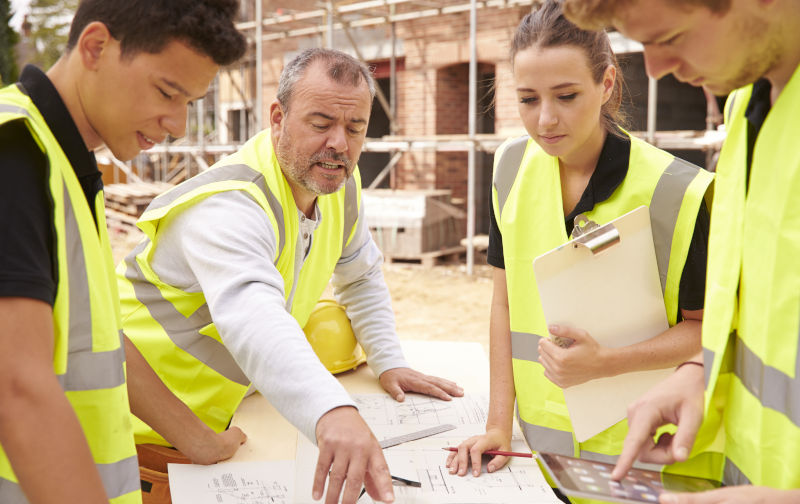Welcoming the New TAFE, a spring-board to fulfilling working lives
June 11, 2023
A TAFE system built around ideas for running 1950s American car-making factories is pretty much an anachronism in Australia in 2023, particularly when our future depends on innovation and rising productivity. But before New TAFE starts, Old TAFE must have a long, hard look at itself.
In the New TAFE, people will be able to start vocational studies irrespective of their school results. Jason, for instance, will be able to get started in bricklaying, even though his reading skills are still at primary school level. He will start his trade reading with short, simple texts. His reading will come from online programs that he can access from pretty much anywhere. His progress will be recorded automatically. The software will chart his developing sight-word reading vocabulary and his ability to understand what he is reading. Even though the words and structure of what he is reading may be simple, the content will enable Jason to learn a great deal about the trade of bricklaying and the building industry generally.
As he extends his reading skills, he will also work on his writing skills. Some of the reading will be about typical bricklaying forms, instructional materials and other routine paperwork. Jason will be able to draft and improve his own workplace writing by using these readings as models for his own writing. He will get constructive feedback on his writing. He will be matched in reading and writing abilities with other bricklaying students around the country and be encouraged to begin moderated written correspondence with his bricklaying peers.
In the New TAFE, lack of Maths skills will no longer be a barrier to commencing vocational education. Sarah, for example, even though she thoroughly disliked the subject at school and had consistently poor results, will be able to begin her plumbing apprenticeship. Her Plumbing Maths program will have her starting at her current maths skill level. Typical plumbing calculations and data interpretation tasks will be broken down to reveal their underlying maths skills and understandings. These will be used to produce an individualised maths learning sequence. As with the reading and writing elements in New TAFE, study will be around Plumbing related applications for maths.
Vocational Maths programs in New TAFE will also record student progress and provide regular feedback and suggest future study options. Demonstration clips and interactive online content will augment the more conventional media for learning. Students will be encouraged to set achievable personal learning goals. Students will be encouraged to seek input from employers etc. regarding their maths learning priorities.
New TAFE Reading, Writing and Maths content will extend into learning areas associated with diploma or degree studies. Student enrolled at lower levels will be able to explore this content as being simply student interest driven or a precursor for further study.
In their Reading, Writing and Maths skills development, Sarah and Jason will be able to explore outside the needs of their current or sought-after job. This will help them to prepare for further accredited vocational studies. It will also build their depth of understanding of other jobs within their industry.
For some Jasons and some Sarahs, New TAFE will be the spring-board to properly paid, highly productive and personally fulfilling working lives.
For some older people- Marias and Edwards, Xuans and Anikas, access to New TAFEs vocationally related Language Literacy and Numeracy learning resources will help them in their jobs, futures and communities.
But before New TAFE starts, Old TAFE must have a long, hard look at itself.
TAFEs core concept competency based training was attractive in the 1950s when Taylorism was in vogue. It was a time when standardised worker inputs could be precisely defined and scientifically managed by multiple layers of supervision. It was the time of white collars vs blue collars, Labour vs Capital, them vs us.
Old TAFE has accumulated thick layers of innovation-smothering administrative strata. Old TAFE does well with most hands-on skills training, but has trouble with broad vocational education. Old TAFEs structures have been in place for long enough to have developed the capacity for allergic reactions to threats that may disrupt its status quo. Old TAFE obsessively seeks to place all human skills and knowledge in boxes labelled in numerical order from Cert 1 through to Advanced Diploma, and very boldly assumes that everyone will progress uniformly through the learning contents of each of the boxes, in precise numerical order.
To keep our place in the world, we must all be thinking about ways to be more productive at work. We all have to be learning throughout our working lives. We have to be pooling our knowledge, debating and communicating. The most dynamic and productive workplaces are participatory. In these places, Structural engineers talk to riggers and crane drivers. Clerical staff can suggest ideas to the Head of IT.
A TAFE system built around ideas for running 1950s American car-making factories is pretty much an anachronism in Australia in 2023, particularly when our future depends on innovation and rising productivity.
